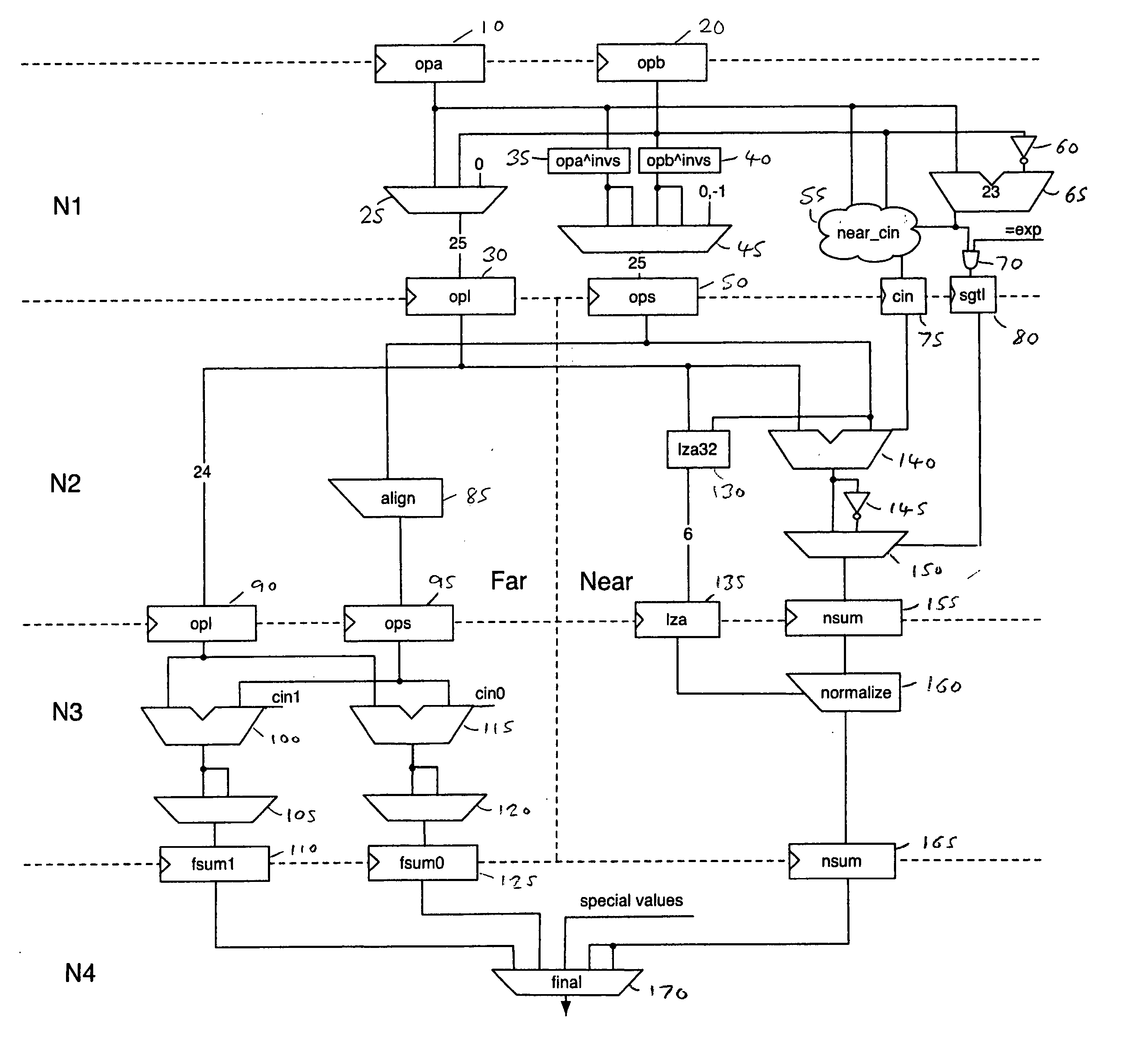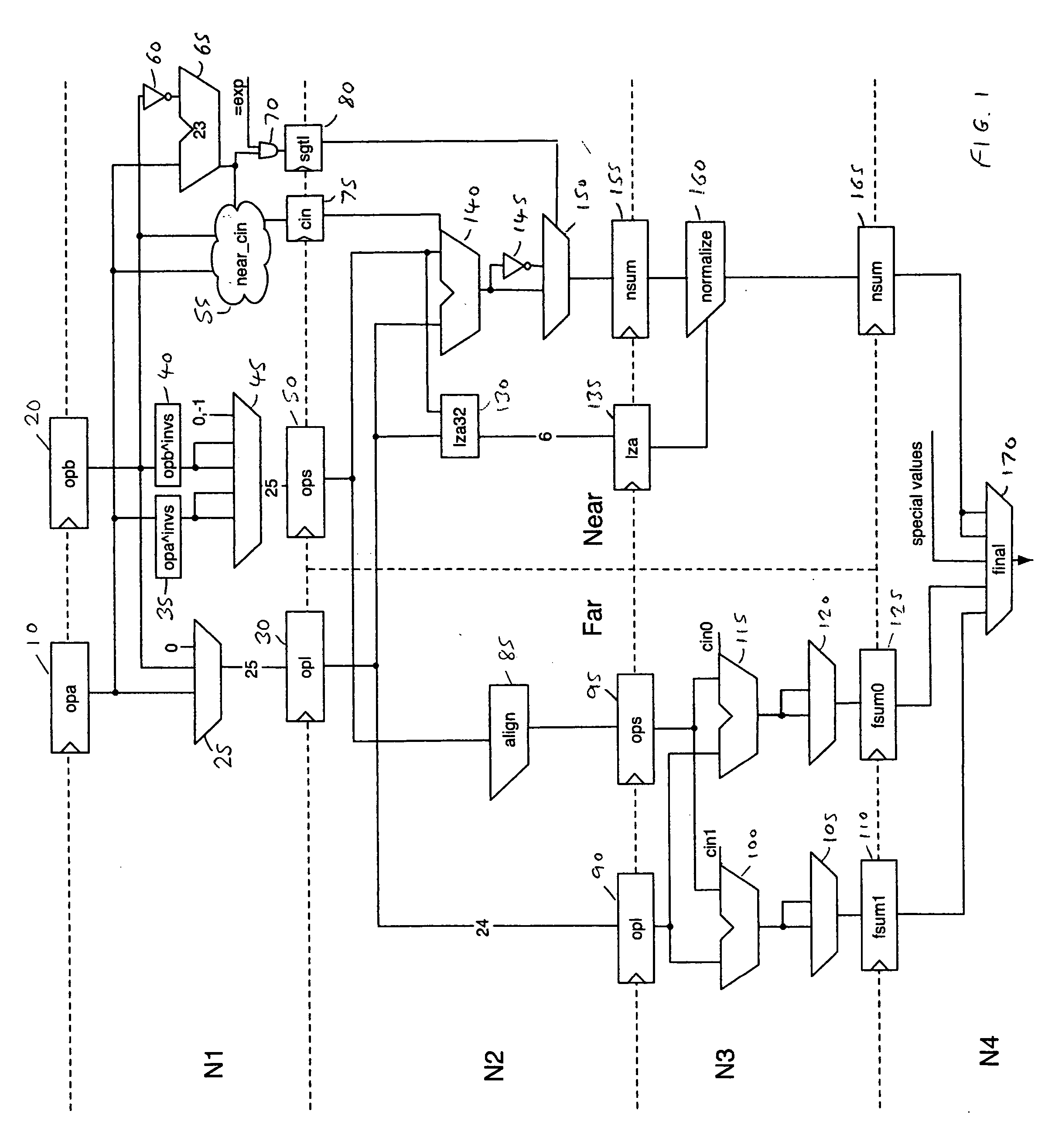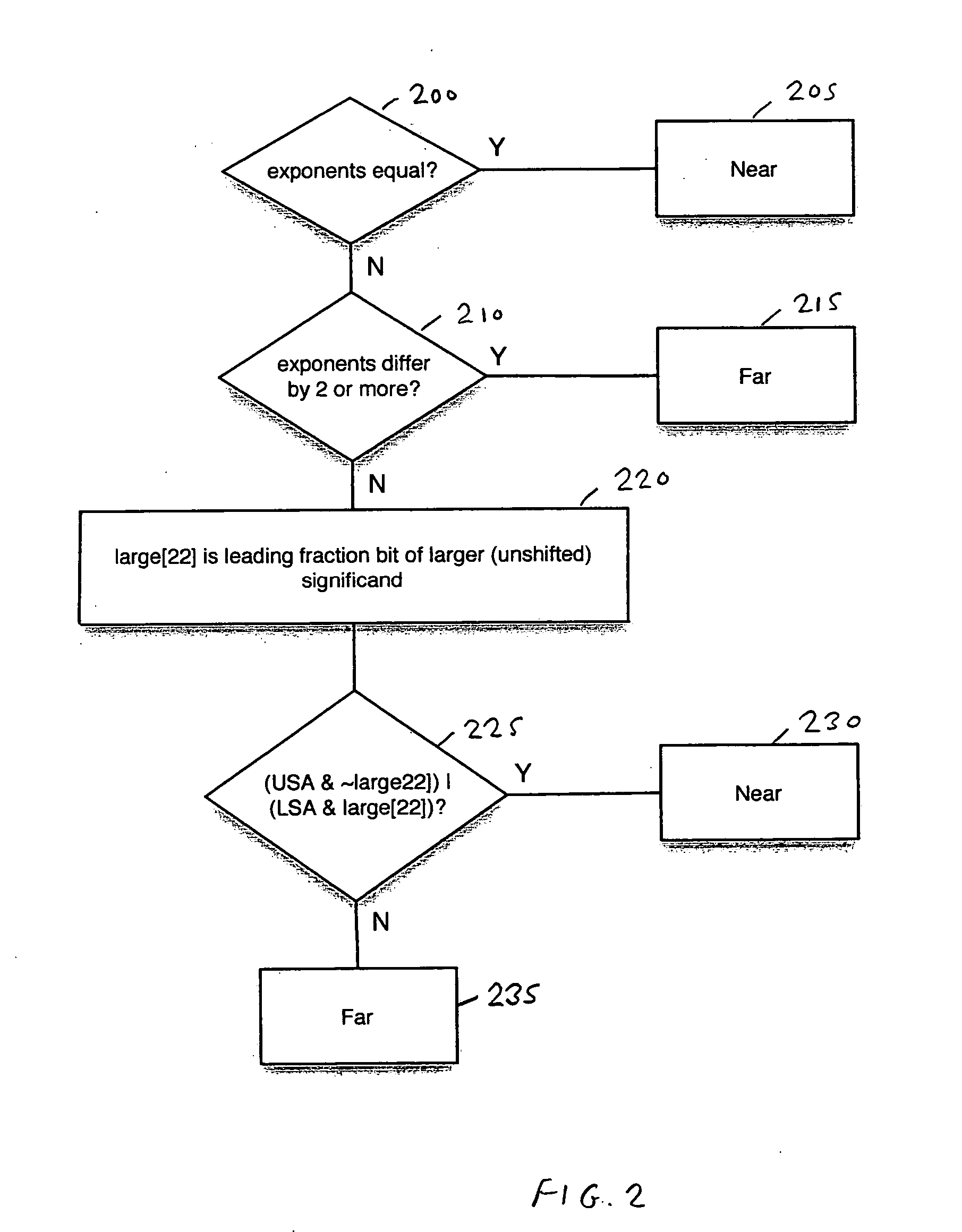Data processing apparatus and method for performing floating point addition
a data processing apparatus and addition technology, applied in computing, instruments, computation using denominational number representation, etc., can solve the problem that most additions need to be performed using the far path, and achieve significant power savings
- Summary
- Abstract
- Description
- Claims
- Application Information
AI Technical Summary
Benefits of technology
Problems solved by technology
Method used
Image
Examples
case 1
[0067] Exponents Equal
[0068] Since the inputs A and B are normal numbers, the sum of the n-bit significands (C=A+B) will have n+1 significant bits. In accordance with one embodiment of the present invention, an extra zero bit is added to the right of each input significand by the multiplexers 25, 45, so in actual fact an n+2 bit sum is produced, with the high order bit being 1 and the low order bit being zero. Since the high order bit is 1, C consists of a normal n-bit result, with two extra low-order bits. In order to round C, its 3 low order bits must be assessed.
[0069] For single precision numbers:
[0070] A=1 a22 a21 . . . a2 a1 a0 0
[0071] B=1 b22 b21 . . . b2 b1 b0 0
[0072] C=1 c22 c21 c20 . . . c1 c0 G S
[0073] Rounding is computed by looking at L (which is just bit c0), G, and S. For RNE rounding mode, the rounding increment to be introduced at bit L is given by the equation:
(L AND G) OR (G AND S)
[0074] In the above case, S=0, so the rounding increment is given by:
L AND ...
case 2
[0078] exponents differ by 1, and high order fraction bit of larger significand is 1.
[0079] Without loss of generality, assume that A has the larger exponent, and append an extra low order zero to A. Since the exponents differ by 1, we shift the significand of B right by one bit position so that bits are aligned correctly for addition. For single precision numbers:
[0080] A=1 1 a21 . . . a2 a1 a0 0
[0081] B=0 1 b22 . . . b3 b2 b1 b0
[0082] C=1 c22 c21 c20 . . . c1 c0 G S
[0083] There can be no carry out of S, so
[0084] S=b0
[0085] G=a0 XOR b1, and
[0086] L=c0=(b2 XOR a1) XOR (b1 AND a0).
[0087] Again, if a rounding increment is required, it is accomplished by adding 1 at the L bit position. Let L′=a1 XOR b2. It has been found that adding L′ and 1 to the sticky bit position is equivalent to correctly rounding. As discussed above, for the RNE rounding mode, the rounding increment to be introduced at bit L is given by the equation:
PUM
 Login to View More
Login to View More Abstract
Description
Claims
Application Information
 Login to View More
Login to View More - R&D
- Intellectual Property
- Life Sciences
- Materials
- Tech Scout
- Unparalleled Data Quality
- Higher Quality Content
- 60% Fewer Hallucinations
Browse by: Latest US Patents, China's latest patents, Technical Efficacy Thesaurus, Application Domain, Technology Topic, Popular Technical Reports.
© 2025 PatSnap. All rights reserved.Legal|Privacy policy|Modern Slavery Act Transparency Statement|Sitemap|About US| Contact US: help@patsnap.com



